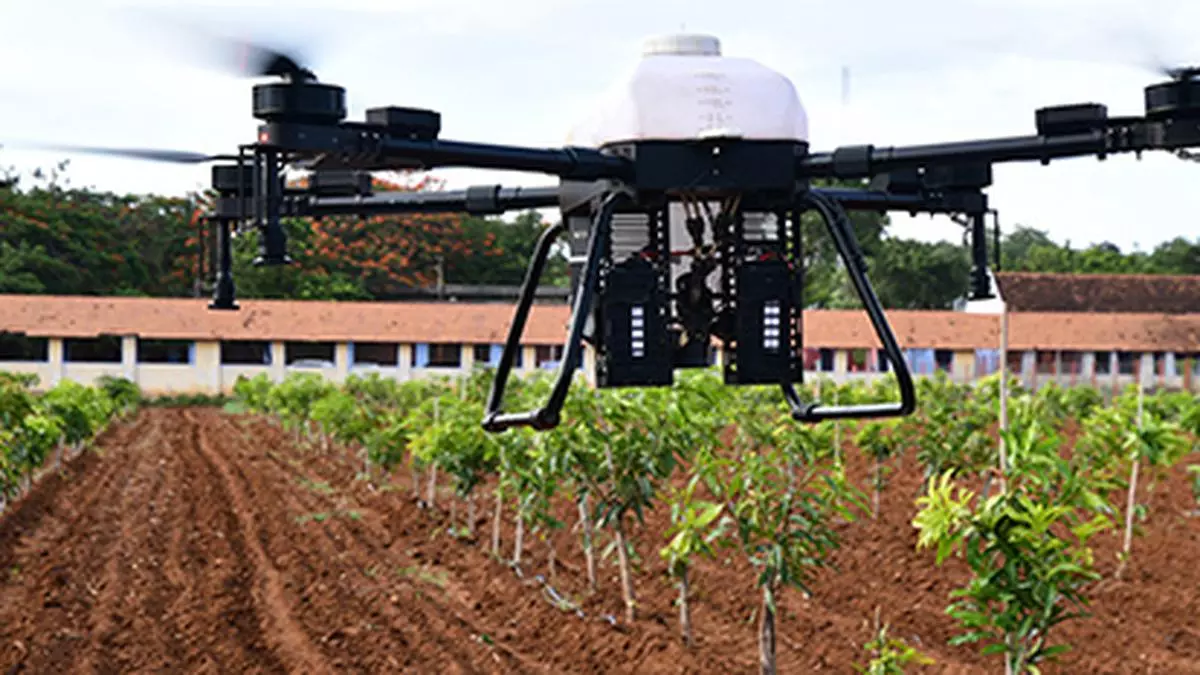India’s rural insurance industry is being transformed by technology

India’s rural insurance industry is being transformed by technology
Despite having the second-largest population in the world, India’s insurance industry is still in its infancy. In comparison to other Asian countries like China, Malaysia, and Thailand, which reported 4.99, 4.72, and 4.30 per cent, correspondingly, India’s insurance penetration is at 3.76 per cent of the GDP. This is due to the fact that the majority of India’s 70 per cent rural population does not know how to utilize insurance as a risk management tool. As a result, major insurance firms continue to ignore the rural market.
Despite persistent attempts by insurance firms, insurance penetration is low in rural India as a result of significant variations in the physical and economic landscape.
The market is also challenging to seize due to limited insurance knowledge, the availability of “one size fits all” solutions, onerous documentation requirements, and low income. Due to last-mile delivery issues, traditional distribution channels are unable to provide insurance at a reasonable rate.
Addressing the issues of awareness, accessibility, and affordability

Low insurance penetration has been a problem for poor people for more than ten years, whether they live in urban or rural regions. In rural communities, there is very little understanding of insurance as a kind of financial protection. Additionally, the majority of the insurance comes with premiums that are out of their price range.
It is essential to remove obstacles linked to knowledge and cost that widen the inaccessibility gap in order to enhance insurance uptake in rural regions.
It might be difficult for insurance carriers to make their products available to the rural population through conventional distribution methods. Therefore, a comprehensive strategy that can address issues with knowledge, accessibility, and the cost is needed to improve insurance uptake.
Technology as a facilitator

It is crucial to keep technology penetration ahead of insurance penetration before entering rural areas. With the use of technologies like AI, ML, and data analytics, insurance platforms can study the behaviour and product preferences of rural people. Additionally, the introduction of digital models can improve how easily insurance products are accessible to people with varying income levels.
The rural sector has seen a rise in smartphone usage during the last five years. They no longer need to visit physical stores, thanks to internet connectivity.
Thus, customers are able to purchase inexpensive insurance online with the aid of insurtech platforms. The process of selling insurance has been streamlined by insurtech media, and this has improved consumer engagement. Giving client information for insurance policies is more straightforward with seamless API connectivity and an end-to-end digital procedure, which also speeds up the distribution of quick products.
Bite-sized and miniature insurance products

Fewer than 10% of Indian rural residents now have life insurance, and even less than 20% of them have any health insurance. The country’s insurance penetration rate may be raised by offering micro and bite-sized insurance products that are specifically suited to the demands of the rural people. Additionally, the emphasis must move to providing efficient coverage at affordable premiums with less paperwork.
This will make it easier for them to choose an insurance policy that doesn’t drain their finances and offers the best coverage at a competitive price.
Making insurance products available to the rural community is just as crucial as creating personalized insurance solutions. To make this possible, insurtech platforms and pure-play financial institutions may work together, and API linkages can make it simple for customers to access goods through their cellphones.
The API Integrations have the ability to provide clients with a higher level of personalization in a short amount of time. Having said that, establishing confidence with the rural populace still requires the deployment of the appropriate PoSPs or local agents for physical help.
Adopting a hybrid business strategy that combines traditional and online sales can improve financial literacy by encouraging more people to buy insurance in rural regions.
The Indian auto insurance market is changing as a result of technological changes.

The insurance sector in India is modernizing through technology. Technology in the insurance industry is altering the ecosystem in both fundamental and scalar ways. The outcome of businesses utilizing data and technology more than ever before and evaluating new business models and revenue streams enabled by new technologies is the digital-first business model. Modern insurance technology is now a vital aspect of the industry for both the insurer and the insured.
Consumers nowadays have more complex wants and are more aware of their preferences than ever before. They desire personalized messages and tailored offers that encourage insurers to digitize their operations and enhance all forms of communication.
With the fast development of new technologies like artificial intelligence (AI) and the Internet of Things (IoT), the business environment is changing, and established market players are implementing strategies to help their organizations undergo a digital transformation. The industry’s acceptance of any developing technology is a top-down process, and the insurance industry must take the lead and usher in the digital transformation. This starts with an assessment of new technology adoption and ends with changes in consumer behaviour.
The Indian insurance market has adjusted to several advancements, changes, and trends, such as:
- Artificial Intelligence (AI):
Customers are constantly looking for personalized experiences, particularly when purchasing something as significant as insurance. Insurers may now create these distinctive experiences in response to the immediate demands of new customers, thanks to AI. Insurance companies can speed up the claims processing cycle and fundamentally alter the underwriting procedure with AI. AI helps insurers access data more quickly and eliminates the need for human intervention, leading to more accurate reporting in less time.
- Machine learning:
Not only can machine knowledge enhance complaint management, but it can also automate it. When files are digitized and available through the cloud, pre-programmed algorithms may be used to analyze them, accelerating processing time and accuracy. The administration of policies and risk assessment are two applications for this automated evaluation. Additionally, improvements in ML (Machine Learning) enable present operators to systematize ever-complex activities, particularly by responding to all kinds of consumer demands. Machine learning is being utilized to give self-service digital damage assessments, handle automatic small claims payouts, and detect fraud.
- Telematics:
Telematics’ capabilities will continue to have an impact on vehicle insurance. It is automobile wearable technology used in insurance technology. Monitoring devices are installed in cars to help with measurements of several characteristics, including speed, position, and accident information. The policy premium is then determined by employing analytical software to verify and evaluate this data. Telematics use provides several advantages for both policyholders and insurers. It encourages safer driving practices, which directly correlate to decreased insurance costs due to damage. Additionally, it enables businesses to provide better customer service and foster proactive partnerships.
- Chatbots:
Some estimates state that chatbots will fuel 95% of all customer interactions by 2025. Chatbots can speak openly and honestly with consumers thanks to the efficient use of AI and machine learning, which helps businesses save time for everyone. This further aids in lowering expenses for insurance providers. A consumer can use a bot to help them with the policy request or complaint procedure, with human interaction being limited to more complicated situations.
- Internet of Things (IoT):
The majority of consumers are happy to give additional personal information if it means getting a better deal on their insurance policy, and IoT can computerize a lot of this data interchange. Insurance companies may leverage information from the Internet of Things (IoT) devices, such as the many components of smart homes and wearable technology, to better control costs, reduce risk, and even avert losses. The IoT will provide other insurance technologies with first-hand data, enhancing the accuracy of risk assessments and providing policyholders more direct control over how much their policies will cost.
- Technology’s positive impact on the vehicle insurance sector:
The digitalization of procedures, making them smooth for insurance agents and clients, is the key to the future of insurance. The Insurance Regulatory and Development Authority’s establishment of the IRDAI (Regulatory Sandbox) underlines the government’s intention to see digitalization as the sector’s future. The rule will provide a setting that encourages the testing of insuretech solutions. Over the next five years, digitization will also increase insurance penetration in India’s semi-urban and rural areas.
An emerging technical change in the Indian insurance sector

The insurance industry’s marketing strategies have already seen a transformation because of the use of technology-driven platforms, mainly social media.
If we examine the way the insurance industry has operated through time, it is clear that tasks like underwriting, issuing policies, managing the distribution network, and settling claims, among others, used to need a lot of paperwork and physical labour. If someone needed to purchase insurance, they would get in touch with an agent, who would personally fill out the form and deposit it. The process of getting the insurance issued would then take weeks. Another time-consuming problem was claim settlement.
However, things are quickly changing as a result of the development of insurtech. The word “insurtech” refers to a broad range of cutting-edge technologies, including automation, computerized processing, artificial intelligence (AI), data analytics, machine learning, and digital marketing. Based on these technologies, a variety of insurtech businesses and platforms are developing specialized solutions to make the insurance industry less labour-intensive and more effective.
Technology will be essential for ensuring consumer happiness in the post-pandemic world, and it is already reshaping the insurance industry through the automation of outdated procedures. Let’s start with the way insurance firms currently sell their goods to understand how things are changing as a result of insurtech.
Since distribution has transitioned to digital, the sales operations have been streamlined and strengthened.
Customers may immediately assess the products that are offered online, communicate with sales representatives through live chat, and make purchases online from either the insurance business website or the platforms used by insurance aggregators.
Even if the bulk of insurance purchases in a country like India still happen offline, the trends are unquestionably shifting. The majority of the top insurers have already created sophisticated digital platforms that allow customers to purchase plans online. The majority of insurance sales in India will soon be conducted digitally.
Technology is transforming insurance operations in many ways than only direct digital access to insurance products and online sales. For instance, underwriting, a specialist activity, is undergoing a digital change at the moment.
Wearable medical gadgets provide continuous monitoring to help underwriters and offer exact information on a person’s health status.
The digitalization of the application and policy-issuing procedures is one of the main changes that will cause insurance to be widely used in India in the coming years. Only ten years ago, the process required completing complicated documents, and modern conveniences like electronic signatures and policies were unheard of. This has dramatically increased the effectiveness of providing seamless customer support, and future innovation will only make things better.
The way claims are handled changed significantly as a result of technology. Process automation has really made it possible for things to be done that were previously only possible in science fiction.
Technology has made the process of claim verification, assessment, and reimbursements practically effortless. For instance, if a car is damaged in an accident, technology now makes it possible to estimate the damages accurately and gives insurance the ability to make payouts nearly immediately.
Technology-driven platforms, mainly social media, have already changed how marketing is done in the insurance industry. Insurance companies frequently employ automation to glean information from social media and update their customer service in light of data analytics findings. Since the majority of the audience is likely to go online for the best products in a post-pandemic environment, the influence of digital marketing in insurance is much stronger.
The modernization of distribution channels has been directly impacted by this digital marketing integration.
With e-commerce capabilities, there is a growing trend of direct distribution in which clients seeking insurance goods directly contact the business website online and through mobile devices to explore, evaluate, and purchase insurance plans online. Due to digitization, a complex network of middleman distributors is no longer necessary. Regular insurance goods, including auto, home, health, and personal insurance, are now easily marketed online.
Insurtech will promote inclusivity as well. Microinsurance legislation will soon be put into effect in the technology-driven environment. The global insurance environment is already changing, and thanks to technology, insurers may now easily reach new mass consumers.
Data collection and analytics will increase the uptake of insurance products in once unserved regions, including rural India.
With the use of automation, sophisticated analytics, digital smartphone applications, and IoT and AI tools, digital insurance firms will be able to increase productivity and customer satisfaction even with a smaller human staff. In the future insurance ecosystem, these types of leaner firms with broader coverage will become more prevalent.
Bottomline
![]()
The insurance penetration rate has been less than 4% for more than 20 years. The rural insurance industry is ready for a digital makeover and is eagerly awaiting the entry of insurtech firms to capitalize on the underserved rural market. Insurance industry companies are making it simple for financial institutions to provide the rural portion of the population insurance solutions that are both inexpensive and highly relevant by fusing technology and purpose.
Edited by Prakriti Arora




